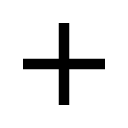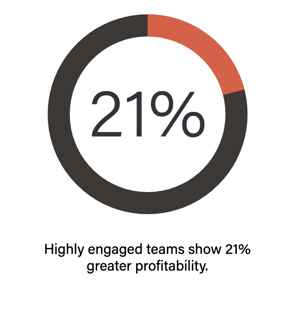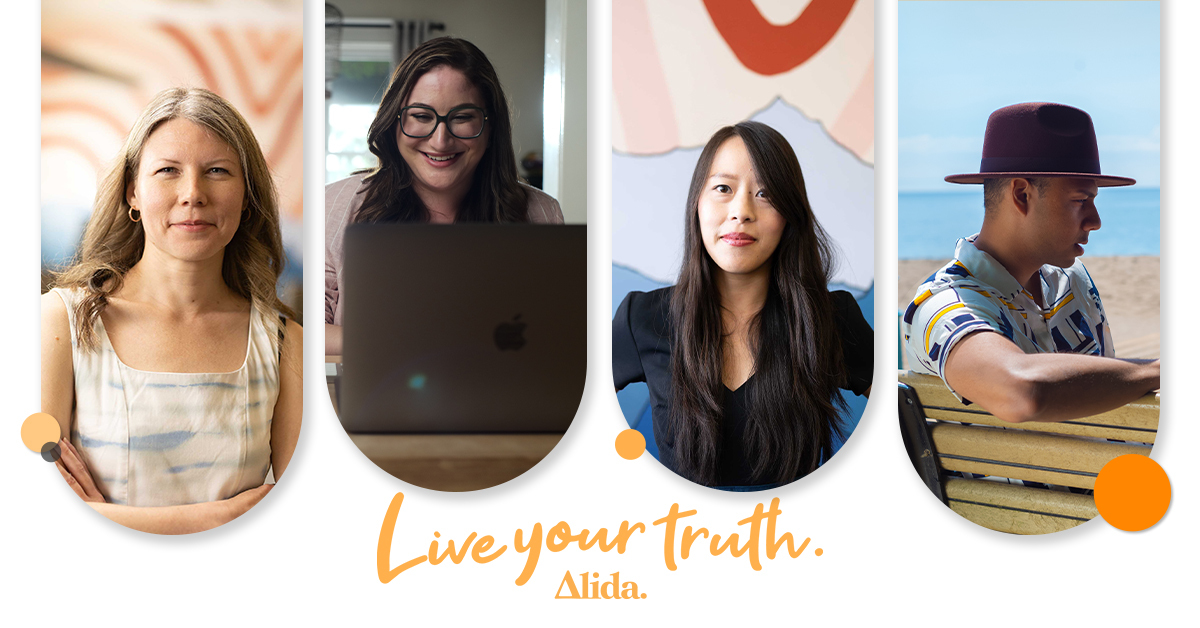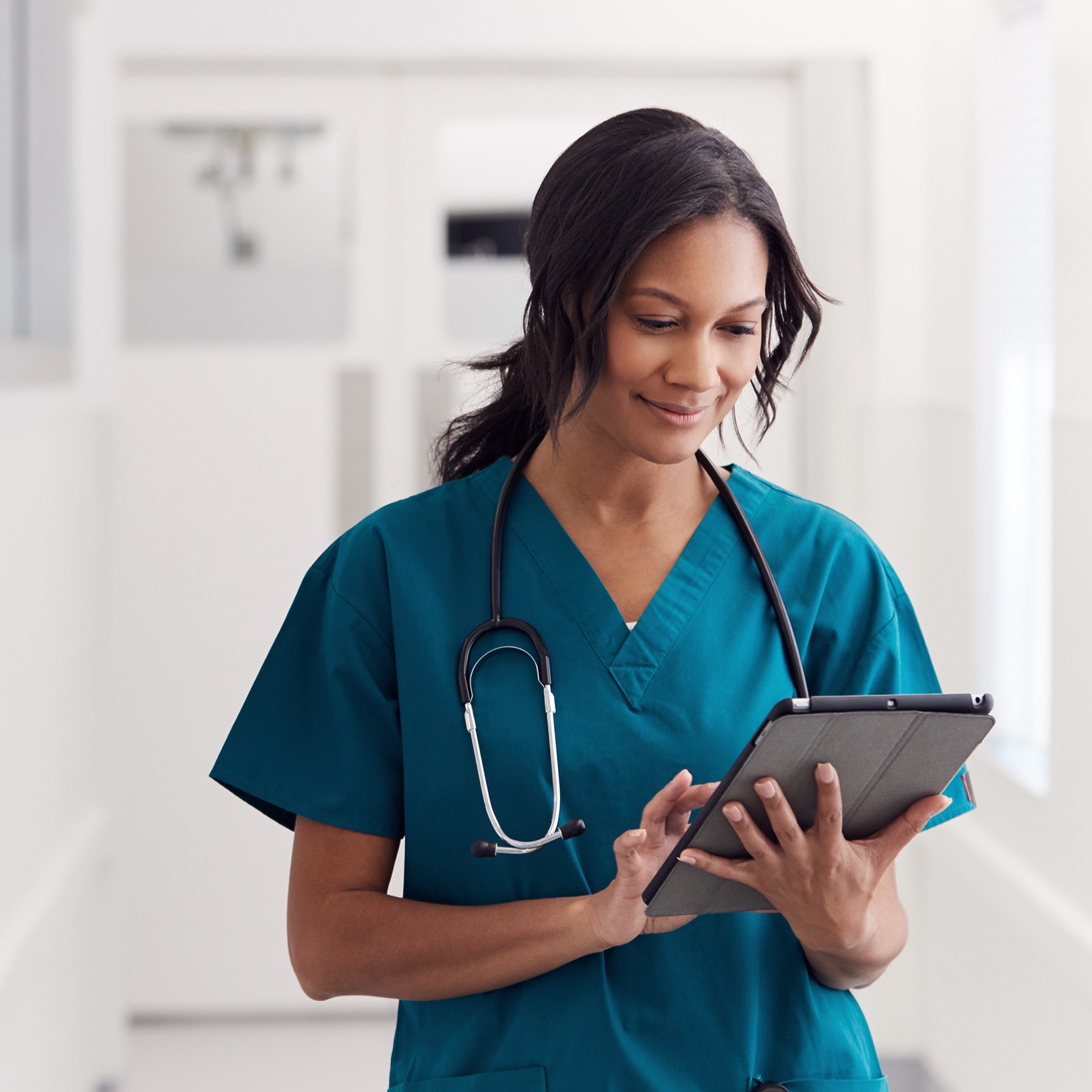Employees are the heart of your business. More now than ever, you need to prioritize your employee experience or you risk losing top talent and even your customers. To quote Richard Branson, “Clients do not come first. Employees come first. If you take good care of your employees, they will take good care of your clients.”
Let's face it: the new world of work is here to stay. Last year we witnessed so much change, so much uncertainty, and so much pressure—and we adapted as best we could.
Employees are navigating new challenges. Balancing home-life and work-life has never been more challenging.
Leaders are opening up about their difficulties managing change-fatigue.
In a world that seems to be changing constantly, how do we keep our employees engaged and motivated?
How do we support employees and balance their wellbeing with productivity?
We've had to adapt, but now it's time to revisit the employee experience.
Designing an employee experience that supports your workforce in the "new world of work" is foundational to achieving positive, consistent, and predictable business results. Being intentional about the culture you are building for improved employee experience requires new strategies from today's leaders.
In this post, we will take a look at four crucial aspects of employee experience, and what you, as an employer, need to focus on:
- Linking employee experience (EX) to customer experience (CX)
- Managing employee wellbeing
- Diversity and inclusion
- Employee motivation
But first, let's start with some definitions so we're all on the same page.
What Is Employee Experience?
Employee experience is defined as an employee's perception about his or her journey through all the touchpoints at a particular company, starting with job candidacy through to the exit from the company.
Employee engagement, on the other hand, refers to how positively an employee is occupied with or committed to the job. Employee engagement is one result of the overall experience and tends to be much more specifically associated with productivity.
Linking Employee Experience to Customer Experience
Employee experience is directly linked to customer experience, and if you want to improve the latter, you have to address the challenges your employees face first.
Here's what we're hearing from employees:
-
- Concerned about career growth
- Issues socializing with coworkers
- Working less formal hours and breaking up their work day
- Having to work on weekends to get ahead in their work
- Wanting to have more family time
- Needing more sleep
- Wanting to reduce their stress
- Communicating with colleagues
- Learning on the job
- Sharing best practices
- Loneliness and isolation
- Not being able to unplug
- Collaborating and communication
Meanwhile, this is what we're hearing from organizations:
-
- 32% of organizations are replacing full time employees with contingent workers as a cost-saving measure
- Shift from designing for efficiency to designing for resilience
- Passive tracing of employees on the rise
- Increase in employee turnover
- Increase in agile/flexible teams
"What we're seeing now is more companies are trying to find out how much time during the day you're logged in, how many messages are you sending to colleagues, how many emails are you sending, basically tracking and measuring the activities of their employees while they work remotely," explains Jonathan Daniels from CX Centric.
Executives are shifting their focus away from work optimization and redesign toward work reimagination, with 61% saying that they would focus on reimagining work going forward as opposed to 29% before the pandemic.
Watch the webinar recording: Rethinking the Employee Experience in the New World of Work.
All these challenges can and should be addressed by companies if they want to maintain a healthy, productive, and empathetic workforce.
Modern customers require you to not simply provide good, competent service (this has long become baseline), but also treat them as human beings, and not a case number. As explained by Peter Dorrington, the Chief Strategy Officer at Anthrolytics:
“To deliver competence with compassion, an employee has to be ready, able, and willing. What I mean by that is employees need to have the ability, the willingness, and the confidence to act on behalf of the organization. A failure in any one of those three directly translates into a poor customer experience.”
Improve Employee Wellbeing
Improving employee wellbeing has recently become one of the top three most important outcomes in work transformation efforts, along with improving work quality and increasing innovation.
Alexandra Crossley, Director of Strategic Accounts at Alida, explains why it’s important to use your customer experience software technology internally and understand what well-being means for your employees:
“To address the topic of wellbeing, we ran a series of surveys combined with in-depth focus groups to understand what wellbeing meant for our employees.
Our HR team then came up with a number of strategies to address the needs, which were validated with another survey, and the most popular ideas were brought to fruition.
As a result, we established company-wide wellbeing days, remote social events, multiple training sessions on how to look after yourself during the COVID-19 pandemic, avoid burnout, etc. Obviously, there is no shortage of ideas when it comes to improving wellbeing, but employee insights ultimately help the business make the right decisions and invest into what employees really want, vs. what we think should be good for them.”
Return to Office Survey: How Do Our Employees Prefer to Work?

Return to Office Survey: What Will Make Our Employees Feel the Most Comfortable?

*Source: Alida 2021
Focus on Diversity, Equity & Inclusion
Diversity, equity, and inclusion are important factors in motivating certain sectors of the employee base. While this has been an important topic for quite some time, it has become even more relevant during the COVID-19 pandemic.
“It was already hard to objectively measure DE&I before the pandemic, but it became even harder to spot when people were being excluded,” explains Peter Dorrington, Chief Strategy Officer, Anthrolytics.
“Employees weren’t involved in meetings, they weren’t involved in projects, there was less communication, and less progression for career growth. I think we need to reconsider some of the ways we use to measure DE&I. Some are still using measurement techniques that are over 100 years old, which come from the mass production and standardization era. Those days have long passed. These techniques don’t work well in the experience economy. They don’t work well for customers, and they don’t work well for employees. We tend to measure what is easy to measure, and not necessarily what is meaningful, and never more so powerfully than in this particular topic.”
It is clear the shift to remote work is impacting employee segments differently. Gartner talks about the humanization (and dehumanization) of workers:
"Throughout the COVID-19 pandemic, some employees have formed more connected relationships, while others have moved into roles that are increasingly task oriented. Understanding how to engage task workers in the team culture and creating a culture of inclusiveness is now even more important. To deliver on employee experience, HR will need to facilitate partnerships across the organization while working with managers to help employees navigate the different norms and expectations associated with these shifts."
At Alida, we have a strong Diversity, Equity and Inclusion (DE&I) strategy that is fundamental to our core values. We believe every voice is important and must be heard and valued. Whether it is our employees, the partners we work with or our customers.
Nikkia Reveillac, Head of Research at Twitter, recently shared how they're adapting and evolving their VoC programs:
“There is a lot of conversation around how to do this well. As you can imagine, there is thought going into everything from who we go after with research to how we recruit and retain people who work at the company. It’s an all encompassing and comprehensive approach to diversity and inclusion. It starts with making sure the people in the building represent the people we serve.
We’re building communities that have marginalized people to make sure that in addition to the research we do, we can tap into this community to ask 'how are we doing? Does this solution/feature work for you?' as early and often as possible."
Keep Your Employees Motivated
Motivated employees are more productive, more creative, and more able to deal with additional demands and changes. Similarly, if an employee is happy with his or her job (and that includes factors like recognition at the workplace, career growth, and having more responsibilities in addition to a nice paycheck), she will also be more inclined to take good care of your customers. In other words, you get what you give.
What’s important to know is that the things that motivate and demotivate employees are entirely separate. In this sense, the opposite of satisfaction is not dissatisfaction, it’s no satisfaction. Likewise, the opposite of dissatisfaction isn’t satisfaction, it’s no dissatisfaction. What does this mean for organizations?
To make your motivational programs successful, you first need to find out and eliminate the factors that are causing dissatisfaction among your employees and only then move towards improving their satisfaction.
Are You Giving Your Employees a Voice?
How can your organization begin to listen and address the issues your employees are facing? A Voice of Employee program and strategy is key.
- Your employees are on the front line of COVID-19
- Give a voice to their courage, their optimism, and dedication
- And recognize their fears, their need for safety precautions, their childcare challenges
- It all matters… it’s their voice
That being said, the traditional approach to capturing the Voice of Employee does come with its own set of unique challenges.
5 Traditional Voice of Employee Challenges
- Employees often don’t engage because they think it takes too long or they can’t easily do it from their phone if they don’t sit at a desk.
- And often, when employees do respond, it often takes too long to make the feedback actionable, which in turn causes even less engagement from employees going forward.
- Another big challenge we hear is that organizations expect employees to interact with multiple communication channels (intranet, social sites, chat, employee portals. And to make things worse, not all employees have access to all channels.
- It's difficult for companies to close the feedback loop with employees to demonstrate that they understand them and that they're implementing changes based on their feedback.
- And lastly, we know that mastering technology isn’t the HR or Communications teams' first priority. Many of the systems they use are complex and require a lot of guidance.
A Better Approach to Voice of Employee
At Alida, we think there is a better way to elevate employee experience, starting with an engaged employee community where organizations have the opportunity to collect honest, real-time feedback and to share back action taken so employees know their voices are heard.
- Engage employees with short, fun activities
Short, interactive, gamified experiences increases engagement. - Inform organizational & HR decisions with real-time results
Text analytics, sentiment analysis and response tagging make uncovering insight fast and easy. - Listen and provide help to employees during crises
Crisis situations demand an empathetic approach that encourages employee feedback. - Improve employee attrition & absenteeism
Uncover the root cause of employee attrition and absenteeism and drive organizational change.
The voice of the employee isn’t only a means to a better EX—and customer surveys aren’t the only way to collect feedback about CX. Augmenting Voice of Customer insights with employee feedback provides valuable perspectives that a lot of companies aren’t taking advantage of.
Listening to the voice of both its healthcare customers and employees empowered Experian Health to take action around the pandemic from a place of empathy.










